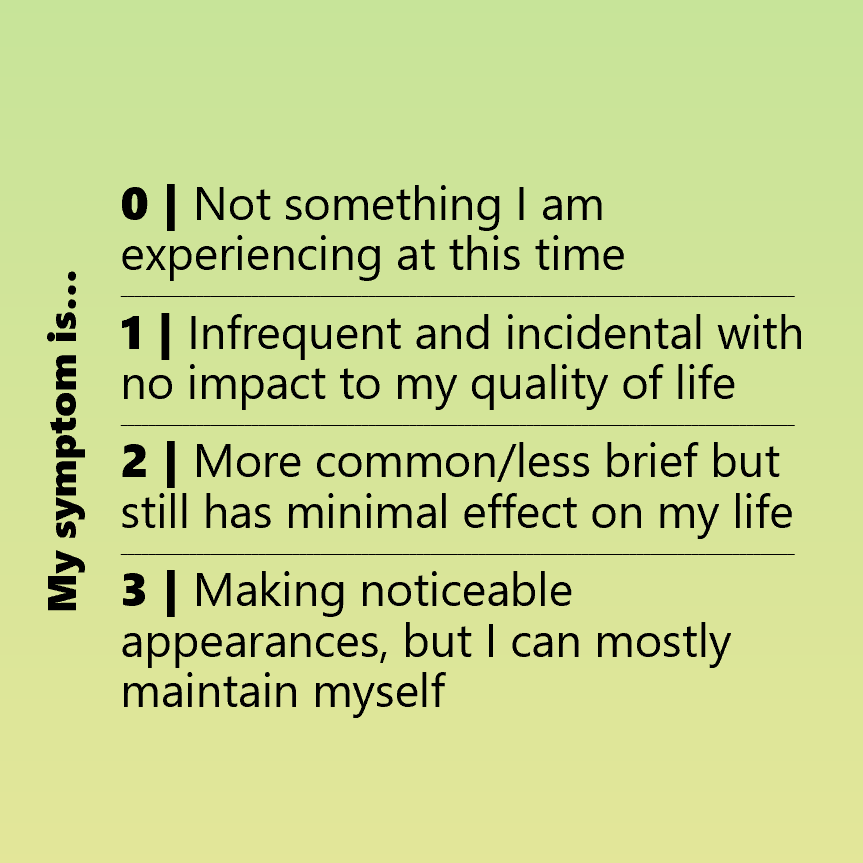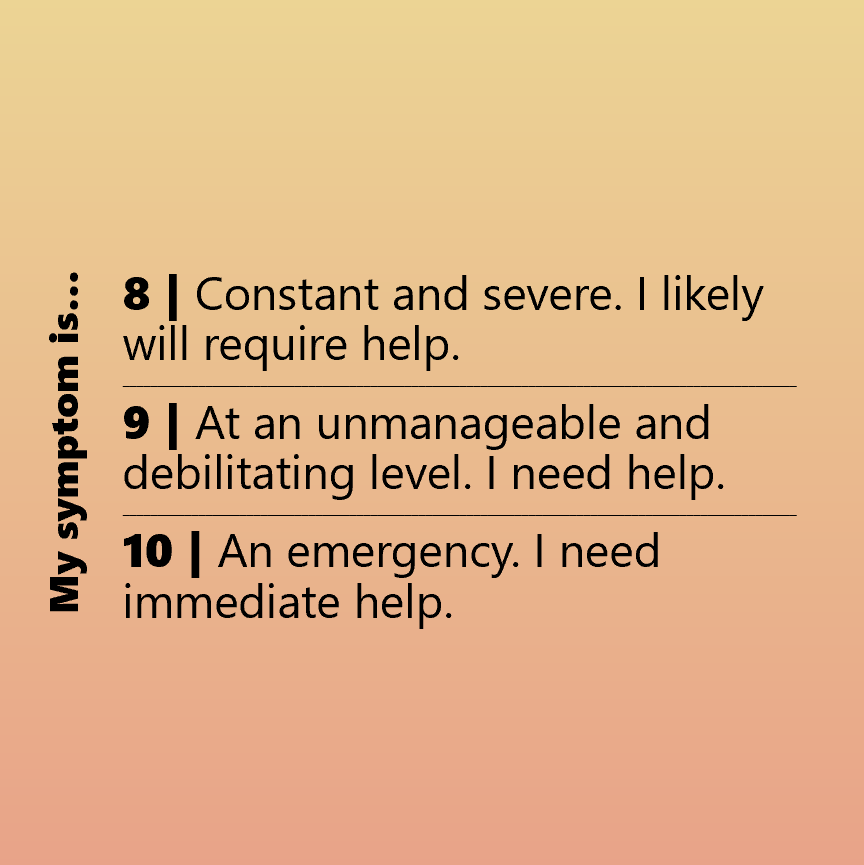Symptom Context Scales
A personalized guide to psychiatric symptom severity
Once upon a time, someone invented that 0-10 scale of faces in pain, because the question "Does it hurt?" doesn't provide nearly enough information. It's important to put that pain into context.
I think the same goes for psychiatric symptoms and behaviors. Patients often get asked whether we are experiencing suicidal ideation, or thoughts of suicide. Well, what if it's been on my mind a lot, but I don't find those thoughts particularly appealing? Do you still say yes and risk the mandatory reporting that might get you locked up? And how would one measure progress between "yes a lot" and "yes a little"? It encourages quite the false dichotomy.
My bipolar support group has floated the concept of what I call "symptom context scales" and the idea is making a personal 0-10 symptom or behavior scale to better describe where you're at and how much help might be appropriate. Not everyone has the same tolerance for different symptoms.
Yes, scales already exist for a lot of conditions (GAD-7 for anxiety, PHQ-9 for depression, DAST-10 for substance abuse to name a few) but they don't always highlight a patient's most pressing concern or specific struggles. I also feel they're often missing a solid indicator on how much the issue is impacting life/functioning, and their generality can miss the subtleties of how psychiatric symptoms and behaviors change over time.
In the images above, I've included a starting point for creating your own symptom context scale, but please use this in any way that works for you!


